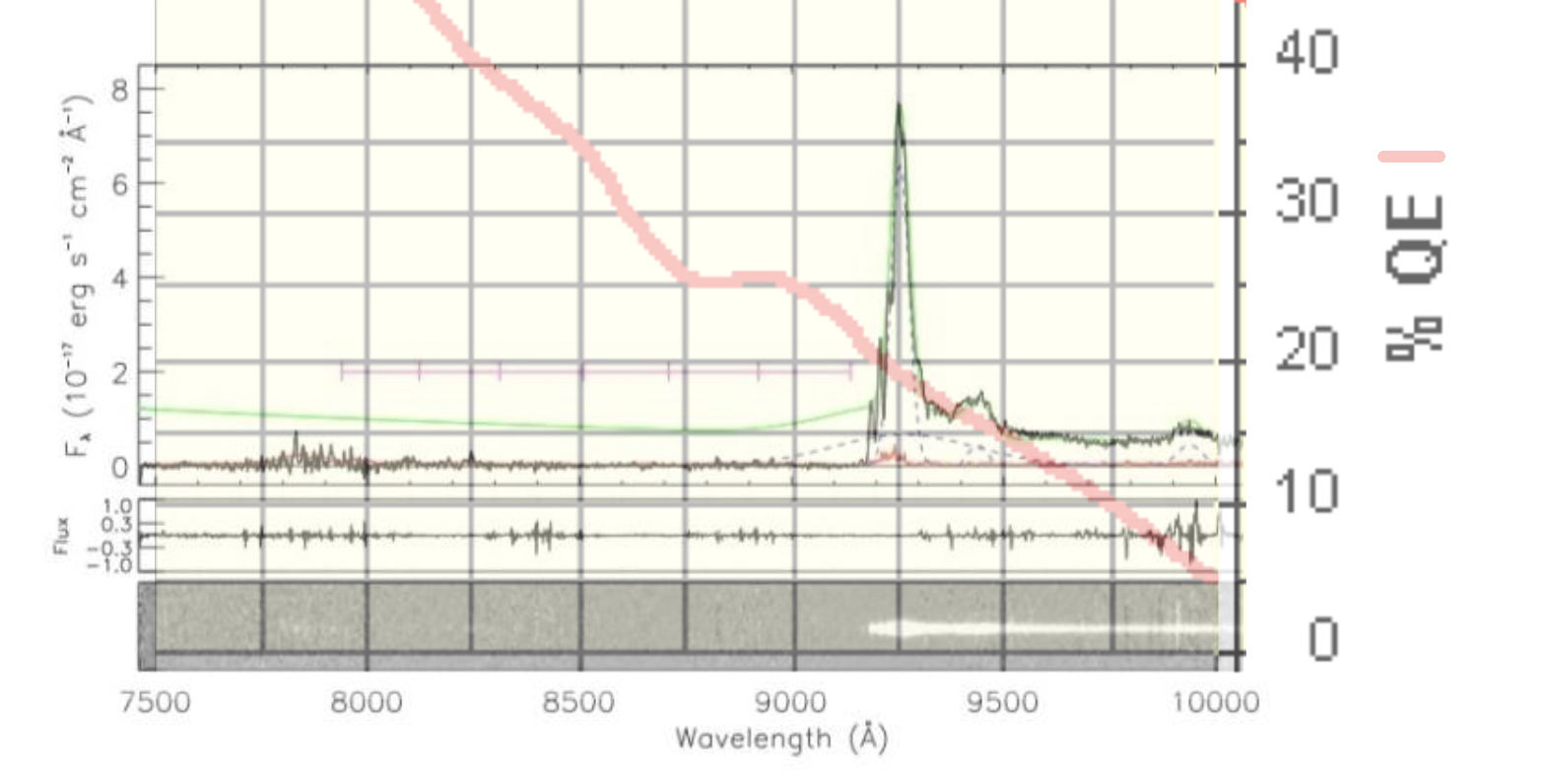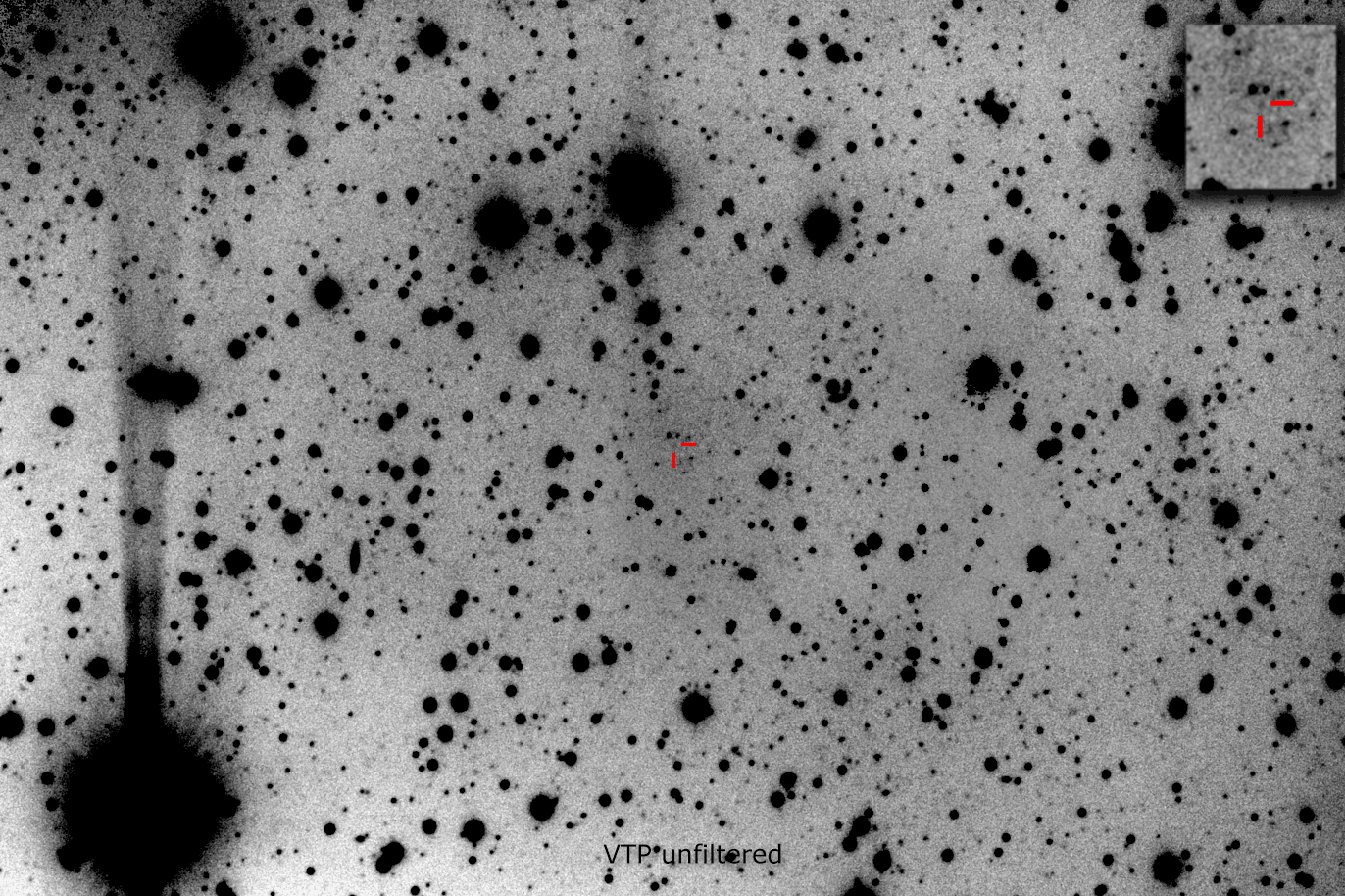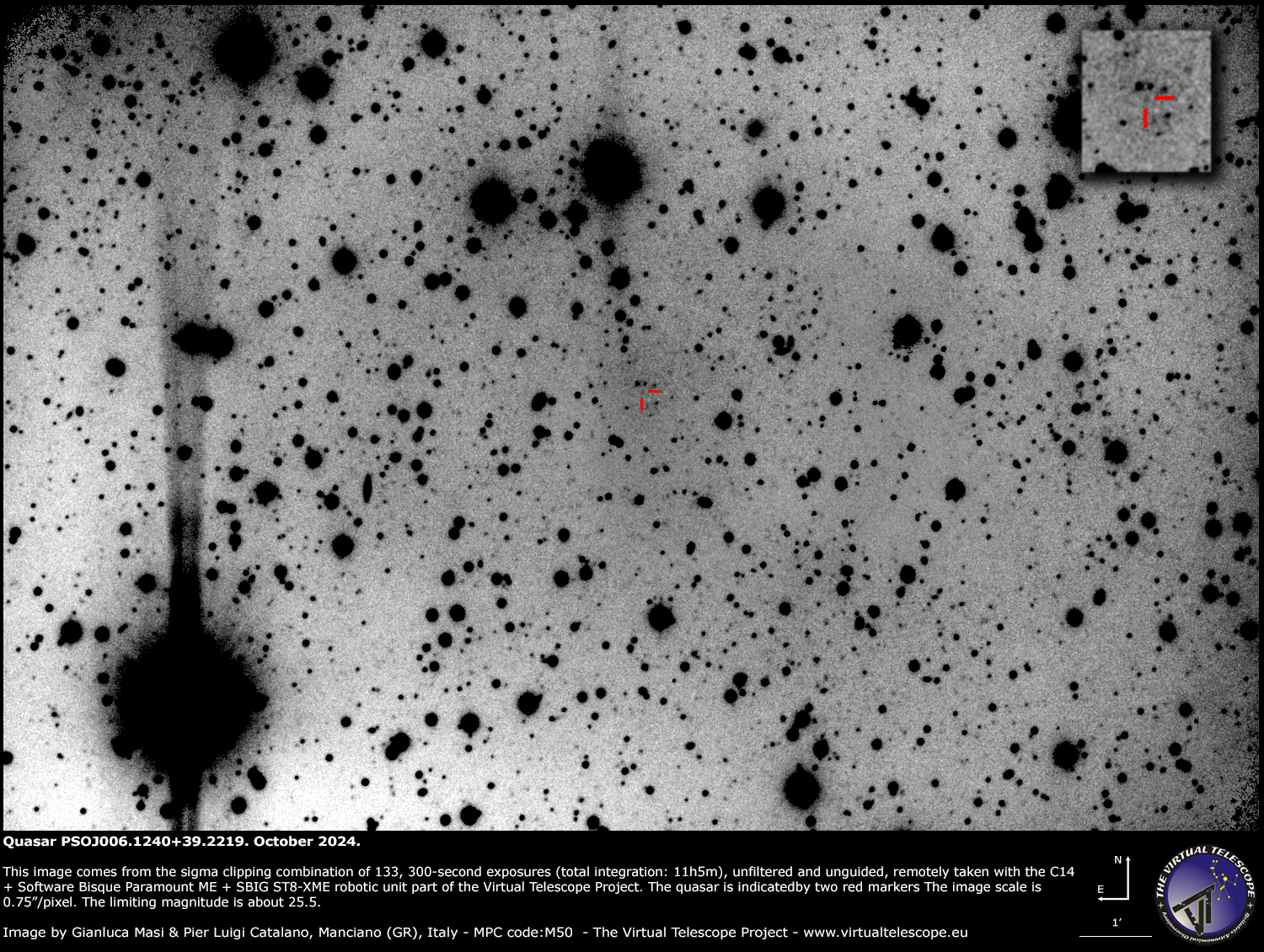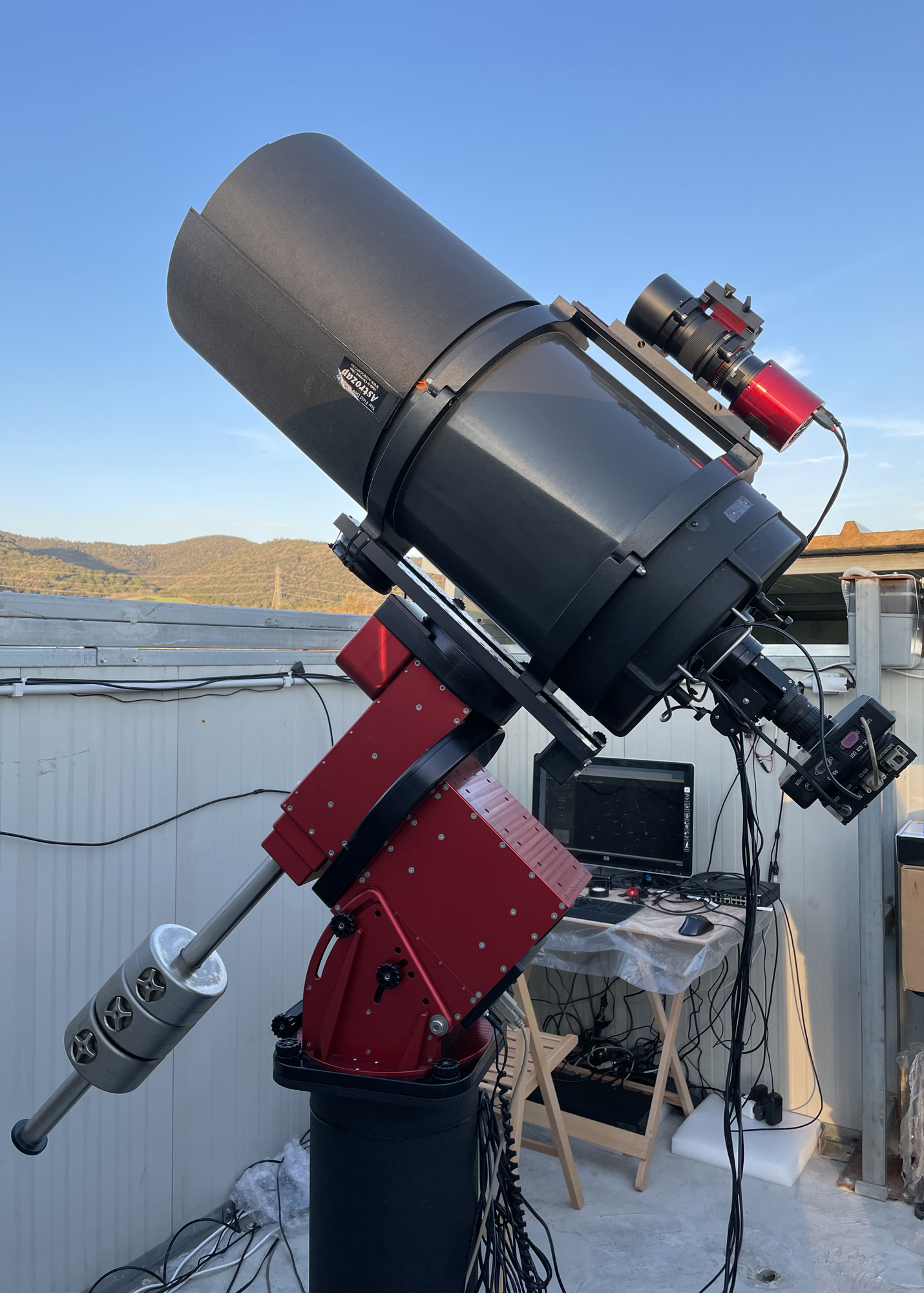The Virtual Telescope Project reaches beyond the visible: record observation at the edge of the cosmos.
Never before had a telescope with a diameter of less than 180 centimeters probed so far into space and time.
Media kit available here.
Records are made to be broken. This statement is especially fitting in light of the new, remarkable record-breaking observation announced by the Virtual Telescope Project today.
Last April, the team of this project, founded and directed by astrophysicist Gianluca Masi, shared an extraordinary achievement: the observation of quasar SDSS J114816.64+525150.3, the most distant object detectable in visible wavelengths. This feat, accomplished with a 350mm telescope, set a new record for reaching such extreme distances with such an instrument.
However, in recent weeks, an even more extraordinary accomplishment has been achieved, a true “mission impossible.” The subject of this achievement is the quasar PSO J006.1240+39.2219. Discovered in 2017, it has a redshift of z=6.62, exceeding the previous record by 0.2 points and therefore appearing even more distant.
This difference, which might seem modest in numerical terms, actually represents a monumental increase in observational difficulty.
“Due to the expansion of the universe, electromagnetic radiation undergoes what we call redshift, a cosmological effect that shifts observed wavelengths toward the red end of the spectrum. This shift grows more pronounced the further away the source is,” explains Gianluca Masi. “At the redshift z=6.62 of PSO J006.1240+39.2219, the Lyman alpha emission, which allows it to be recorded by a telescope, is shifted out of the visible spectrum, beyond red,” he adds.
Observing such extreme objects presents two different difficulties: these sources are exceptionally faint due to their immense distance, and they don’t appear in visible light, but rather in the infrared. This makes PSO J006.1240+39.2219 even more challenging to capture with the Virtual Telescope Project’s equipment than the already difficult SDSS J114816.64+525150.3.
Despite these extreme conditions, the team decided to attempt the impossible. In October 2024, the 350mm telescope captured 133 images of the region of the sky where the quasar is located, each with a five-minute integration time, accumulating a total of 11 hours of signal, 65% more than the previous integration time.
Since the source emits only in near-infrared, the team had to rely on the residual sensitivity to those wavelengths of the camera installed on the telescope.
After carefully calibrating and integrating the data, the resulting image is incredible: the faintest stars recorded are estimated at a magnitude of 25.5, a record by itself for an instrument of this type. Among the registered sources, PSO J006.1240+39.2219 is faint but visible at the expected location.

Spectrum of PSO J006.1240+39.2219 (Tang, J.J. et al., 2017) vs the quantum efficiency of the detector used.
“To our knowledge, no telescope with a diameter under 180 cm has ever reached so deeply into space and time,” says Gianluca Masi. “This result would have been deemed impossible before this epochal achievement by the Virtual Telescope Project, significantly aided by the quality of the observing site, Manciano (GR), which is the most light-pollution-free site in peninsular Italy,” he concludes.

Our deep image compared to the same field of view from Palomar Observatory Sky Survey II (limiting mag. R=21): the difference in deepness is amazing.
It is very likely that no other telescope on Italian soil has ever reached such depths into the vastness of space and time.
The light from this celestial object, marked by a redshift of z=6.62, has traveled 12.9 billion years before reaching us, originating when the universe was only 800 million years old, compared to its 13.7 billion years today. PSO J006.1240+39.2219 lies so far back in time that it takes us to the universe’s “Epoch of Reionization,” between 150 million and a billion years after the Big Bang, due to the energy radiated by the first stars and galaxies formed in that primordial cosmos.
Quasars represent the luminous cores of distant galaxies, whose “engine” is a supermassive black hole. It continuously receives material from the surrounding space, which, while waiting to fall into it, lingers in a very hot accretion disk, releasing an enormous amount of energy, making quasars among the brightest objects in the sky, visible at very deep distances.
Quasar PSO J006.1240+39.2219 hosts a rapidly accreting supermassive black hole, suggesting it is in the early stages of formation, and appears about 200 million times more massive than the Sun, a value 3 to 4 times lower than the typical masses of black holes in high-redshift quasars of similar luminosity.
Such an extreme observation highlights the extraordinary capabilities of the Virtual Telescope Project and the pristine skies of Manciano, in the province of Grosseto, where it is based. In just the last year, its instruments have enabled the discovery of a probable nova in the Andromeda Galaxy, identified a new blazar candidate in one of the most frequently studied regions of the sky, and made the record-breaking observation of SDSS J114816.64+525150.3 before this new achievement. This remarkable scientific contribution adds to the Virtual Telescope Project’s role in promoting scientific culture through collaborations with major media outlets worldwide.
About the Virtual Telescope Project
Founded in 2006, the Virtual Telescope Project is a technologically advanced facility, consisting of various robotic telescopes, active in both research and scientific communication, with remote control through any Internet-connected device. Nowadays, it enjoys an extraordinary international reputation. Through its online observing sessions, the Virtual Telescope Project has been able to show live the most extraordinary astronomical phenomena, such as asteroids passing close to Earth, comets, supernovae, eclipses, and meteor showers, to millions of people worldwide. Its exclusive events and contributions are presented by the most important space agencies and press agencies on the planet. In recognition of the achievements, both in scientific and outreach domains, the International Astronomical Union has assigned the name “Virtelpro” to the asteroid (435127). The Virtual Telescope Project is a member of the International Asteroid Warning Network, which, under the auspices of the UN, works to optimize planetary defense activities against the risk of asteroid impact.
About Gianluca Masi
Gianluca Masi was born in Frosinone. Graduated in Physics, with an astrophysical focus, from “La Sapienza” University, he obtained a PhD in Astronomy from “Tor Vergata” University. He has about 1000 professional contributions to his credit, has discovered dozens of asteroids, numerous variable stars, is a co-discoverer of three extrasolar planets and the transient ASASSN-15lh, among the brightest supernovae ever identified. In 2006 he founded the Virtual Telescope Project. His scientific and photographic contributions regularly appear on Ansa, BBC, CNN, Newsweek, New York Times, RAI, and other prestigious national and international media, radio, and TV. He has given numerous lectures both in Italy and abroad. He actively deals with the relationship between the science of the sky and the world of art, dedicating himself intensively to photography as well. Among the numerous recognitions received, the asteroid (21795) was named “Masi” by the International Astronomical Union for his scientific merits, he won the Planetary Society’s “Shoemaker NEO Grant”, the Italian Astronomical Society’s “Tacchini Prize”, and the Italian Astrofili Union’s “Ruggieri Prize”. Coordinator for Italy of Asteroid Day and Astronomers Without Borders, he is a member of the International Astronomical Union and the European Astronomical Society. He is associated with the National Institute of Astrophysics and Ambassador of the “Dark Skies for All” project of the International Astronomical Union.
Support The Virtual Telescope Project!
Support us! Please, donate and receive an EXCLUSIVE image of the stunning COMET C/2023 A3 Tsuchinshan-ATLAS and much more, specifically made for supporters like you!
![]()





![Quasar [HB89] 1758+388](https://www.virtualtelescope.eu/wordpress/wp-content/uploads/2013/04/hb89_18mar2010-520x245.jpg?x51742)







